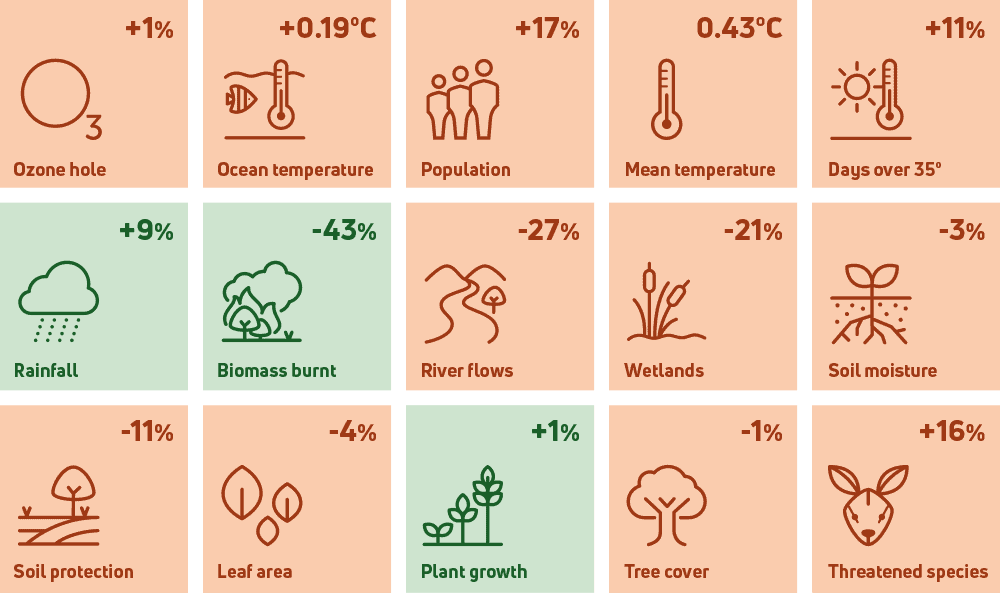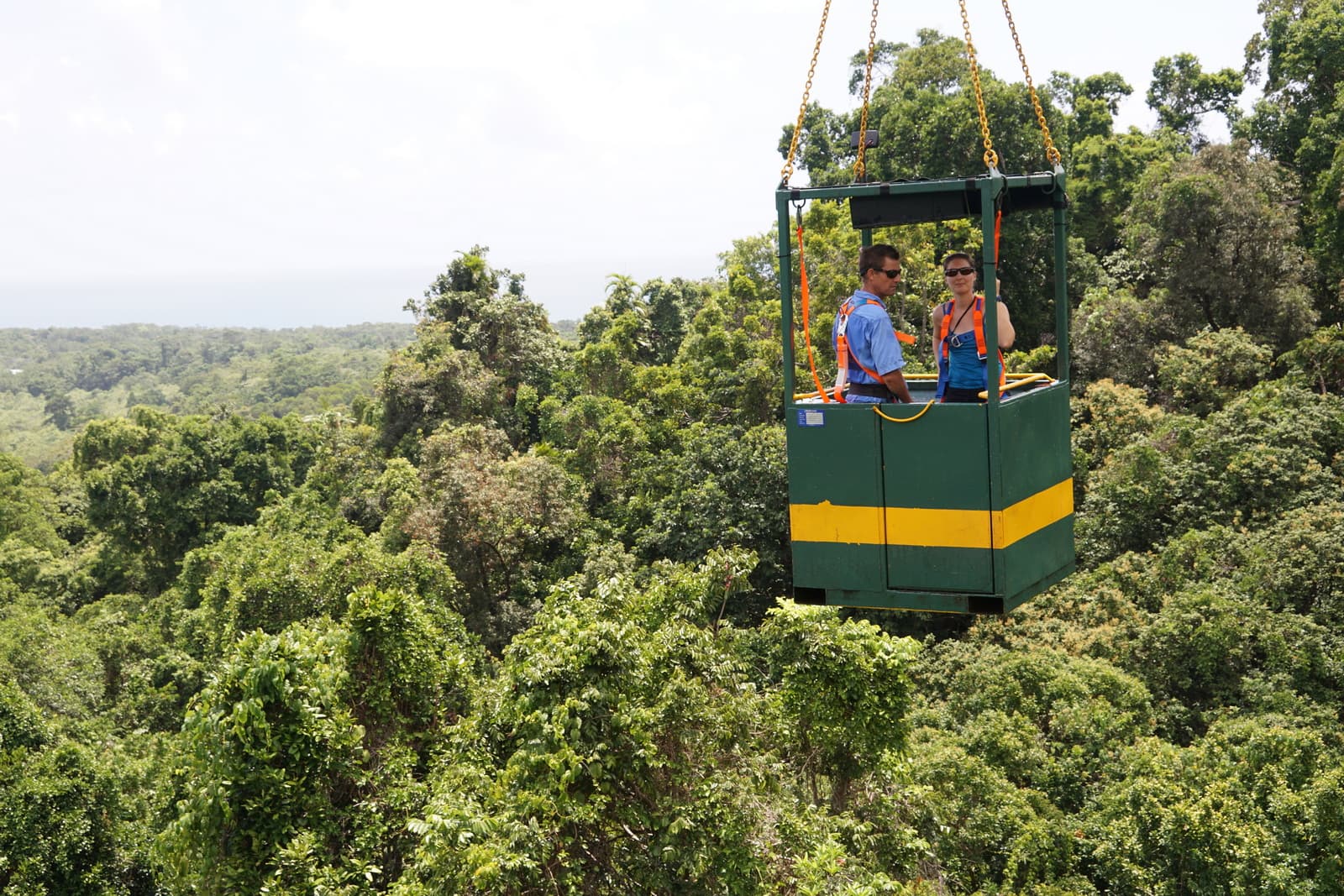Increases in the frequency and intensity of droughts and fires are predicted, and Australia needs to adapt. However, new environmental research using TERN data suggests that some Australian forests are more vulnerable than others and change in water availability might put our rainforests at risk.
Around the world, severe droughts and increased temperatures are causing increased tree mortality, and reductions in forest productivity.
To understand the vulnerability of Australian forests to drought, a team of scientists led by Dr Jen Peters from Hawkesbury Institute for the Environment, Western Sydney University, conducted a continental-scale assessment of plant hydraulic traits and the limits of plant physiology.
Seven TERN ecosystem processes monitoring SuperSites were used in the study based on their contrasting mean annual temperature (9°C to 28°C) and precipitation gradients (240 mm to 5180 mm) to achieve a broad representation of the major Australian biomes.
Each SuperSite is equipped with meteorological instrumentation and an eddy-covariance flux tower. Using these site data and 40 years of modelled climate data from TERN, researchers calculated an aridity index as potential evapotranspiration divided by mean annual precipitation (AI = PET/MAP).
At each location, target species were determined as those making up ~80% of the woody biomass within the site’s 1-ha vegetation core plot.
In total, 33 native tree species, representing 19 unique genera, were studied to measure water potentials, and to assess hydraulic vulnerability. From this, a ‘hydraulic safety margin’ was calculated to quantify the margin between function and failure.

An aridity map of Australia with the TERN sites used in the study: (a) Litchfield Savanna SuperSite, NT, (b) Daintree Rainforest SuperSite, QLD, (c) Alice Mulga SuperSite, NT, (d) Great Western Woodland SuperSite, WA, (e) Calperum Mallee SuperSite, SA, (f) Cumberland Plain SuperSite, NSW and (g) Warra Tall Eucalypt SuperSite, TAS (image courtesy Dr Jen Peters).
Current vulnerability of Australia’s forests
Dr Peters, currently based at Oak Ridge National Laboratory in the USA, says that one of the most interesting findings in this study was that some species located in areas which don’t experience drought, like the Daintree Rainforest, actually have very little protection against it.
“We knew that trees in the rainforest should be less water stressed and have less protections against drought, but working across such different climates, we really bore those predictions out.”
Dr Jen Peters, Oak Ridge National Laboratory
The data revealed that hydraulic safety margins were constrained across sites, with species from wetter sites tending to have a smaller safety margin compared with species at drier sites. This suggests that these species are operating quite closely to their hydraulic thresholds, and that they may be susceptible to even slight changes in precipitation patterns.
“Taken together, I think we are able to show how delicately balanced the physiology of these trees are – both for the environment they live in, and for the internal trade-offs between need for structure, function, water use and growth”

Dr Jen Peters monitoring the stem psychrometer measurements of water potential at TERN’s Warra Tall Eucalypt SuperSite in Tasmania (credit Jen Peters)
Plant response to drought
Despite immense interest in the field, very little was known about the hydraulic traits of Australian forest species, and their susceptibility to drought.
“There is a lot of interest in plant hydraulic traits and defining the limits of plant physiology, and there is increasing evidence that it is difficult for trees to restore function once they reach these thresholds.
We wanted to analyse these thresholds within the context of what is going on right now for these species in their natural environment.”
The strength of the trends in this work are what make it so striking. Although researchers found strong relationships between climate and hydraulic traits across sites, they also found large within-site variation that demonstrates a diverse suite of mechanisms being used to overcome drought stress.
For example, at TERN’s Great Western Woodland SuperSite in Western Australia, the water potential ranges from -2.9MPa for salmon gum (Eucalyptus salmonophloia), to -7.8 MPa for mulga (Acacia aneura).
Salmon gums are known for their massive root networks that extend beyond the canopy edge and reach depths of up to 20m, helping these large eucalypts avoid water stress. However, mulga is a shallow-rooted shrub so it avoids damage with its extremely blockage-resistant xylem.

Dr Jen Peters measuring pre-dawn water potentials at sunrise at TERN’s Great Western Woodlands SuperSite in Western Australia (credit Jen Peters)
Predicting forest health and mortality
Although winter rainfall in most parts of Australia is predicted to be above average, higher temperatures are also predicted. And, looking further ahead, with more severe drought events forecast, it is critically important to understand and predict the mortality tipping points of our forests.
Whilst the findings of this study have contributed much-needed Australian data to the global knowledge base, and will make models of forest responses under climate change scenarios more accurate—particularly useful for policy-making, land management and conservation—additional investigation is needed, says Dr Peters.
“We now know that there are several different strategies or mechanisms plants use to avoid water stress and I really want to look more closely at these to see if one is likely to be more successful in the future.
So, how do we use this information about the current status of trees and forests to assess future risk? The big obstacle is to take this sort of data and make predictions about forest health and mortality in the future.
In the face of increasing global temperatures and drought frequency, it is critically important that we understand and predict physiological thresholds affecting tree mortality.
Large-scale forest dieback will have global impacts on biodiversity, carbon and water cycling.
With the ability to look at temperature, precipitation and aridity as different environmental drivers on plant physiology, TERN is a critical resource for this vital ongoing work.”
- Click here for more information on this research using TERN
- For more information on TERN’s Ecosystem Processes platform, its network of SuperSites and eddy covariance flux towers, and the data they collect click here or explore the open data via TERN’s Data Discovery Portal.

Dr Jen Peters and Markus Nolf collecting leaf samples at TERN’s Calperum Mallee SuperSite in South Australia (credit Jen Peters)

The 2020 Australia’s Environment report warned that recovery from Australia’s hottest and driest year on record, 2019, will be slow, partial and precarious.







